Frontal Himalayan topographic studies
Recently, I was working on a project that uses topographic analyses, Optically Stimulated Luminescence (OSL) dating on fluvial terraces, and pebbles lithology distribution. The topographic study was conducted across three different ranges in the frontal Himalayas; the Churia range, the Dundwa Range, and the Mohand Range. The location of the three ranges are as follow:
Churia Range
Dundwa Range
Mohand Range
Topographic analyses
The bulk of the crustal shortening across the Himalayas is accommodated across the Main Frontal Thrust (MFT), forming the topographic ridges of the Siwalik Hills. Here, I quantify topographic metrics to document the geomorphic response to progressive shortening. I use the integral method of channel profile analysis to assess the topographic response to the development of thrust anticline ridges in the eastern and western Churia, Dundwa, and Mohand Ranges.
 Fig 1. Mapping of normalised (θ=.45) channel steepness.
Fig 1. Mapping of normalised (θ=.45) channel steepness.
The ALOS PALSAR 12.5 m resolution DEMs were chosen to obtain the spatial channel steepness (ksn), knickpoint distribution, and channel concavity (θ) on three thrust fold ranges in the frontal Himalaya. I compared the results of these metrics with the tectonic shortening amount across the three ranges. It demonstrates that the characteristics of those parameters developed with the increasing amount of shortening.
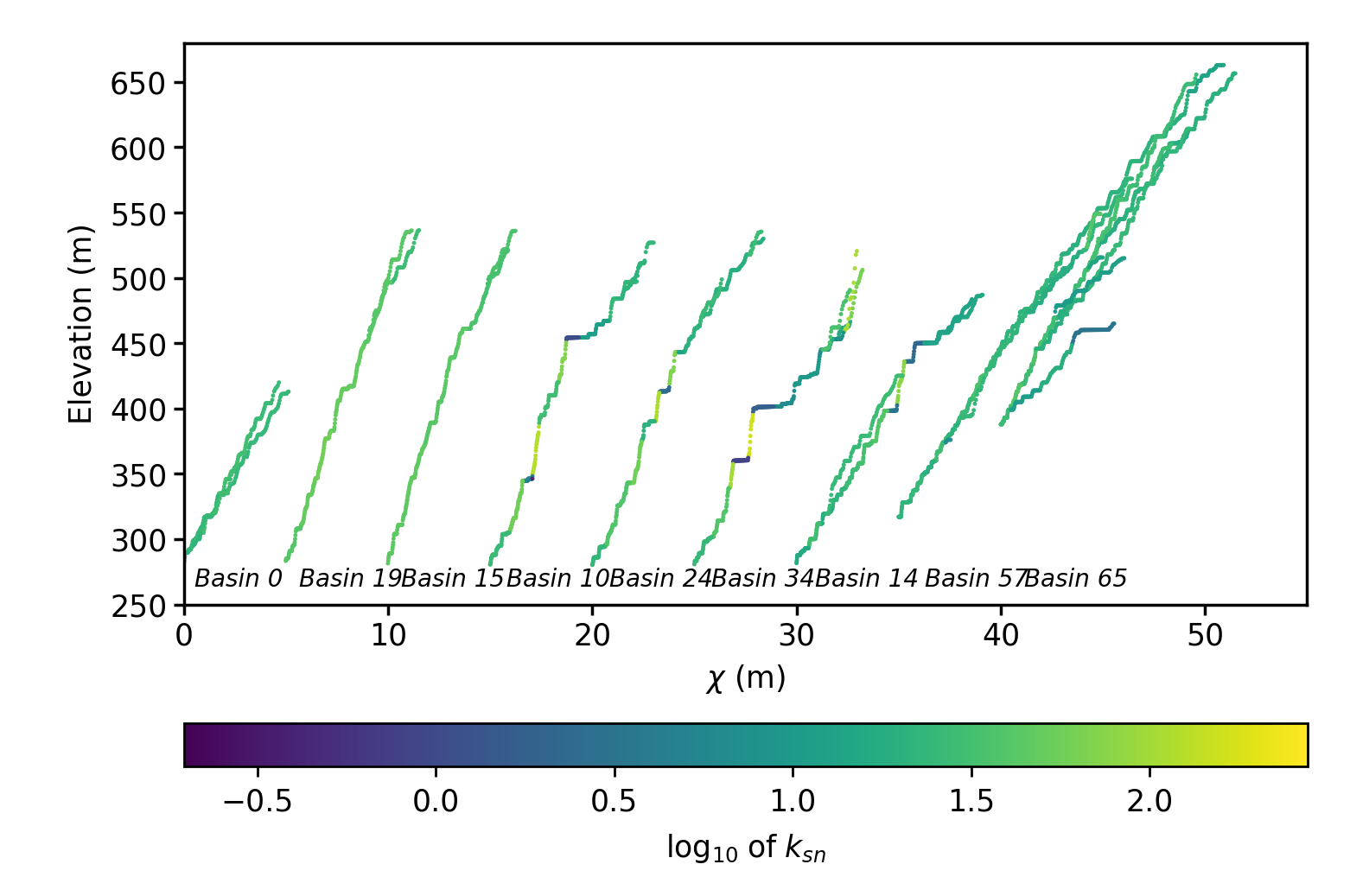 Fig 2. Chi profiles of the basin along the thrust fold ridge.
Fig 2. Chi profiles of the basin along the thrust fold ridge.
River channel steepness (ksn), the distribution of knickpoints, and channel concavity (θ) in the Siwalik Hills indicate geomorphic evolution during ongoing shortening across the deformation front. Mean channel steepness indices increase with increasing shortening over the Quaternary amongst the eastern Churia (~3.8 km shortening), Mohand (~6.9 km shortening), and Dundwa Ranges (~9 km shortening). Higher channel steepness at the western tip of the Churia Range (~0.4 km shortening) than in the eastern Churia and Mohand Ranges may indicate that the topography is still responding to the initial stages of shortening and relative uplift. Balanced cross sections reveal that there is spatial variability in the growth of these ranges, and as shortening increases, the drainage divide migrates southward (away from the mountains) relative to the flat-ramp transition of the underlying thrust; this results in steepening of the southward-draining catchments (basinward facing), and elongation of the northward flowing catchments. Basinward facing channels also have more prominent knickpoints and greater channel concavities caused by ongoing shortening between their fluvial base level and the drainage divide; this contrasts with the mountain facing channels where there is net growth of the distance between the drainage divide and the base level. Despite the asymmetry of erosional processes, the southward displacement of the drainage divide over the underlying thrust ramp drives topographic advection into the foreland succession which eventually leads to the propagation of new thrust-cored ridges.
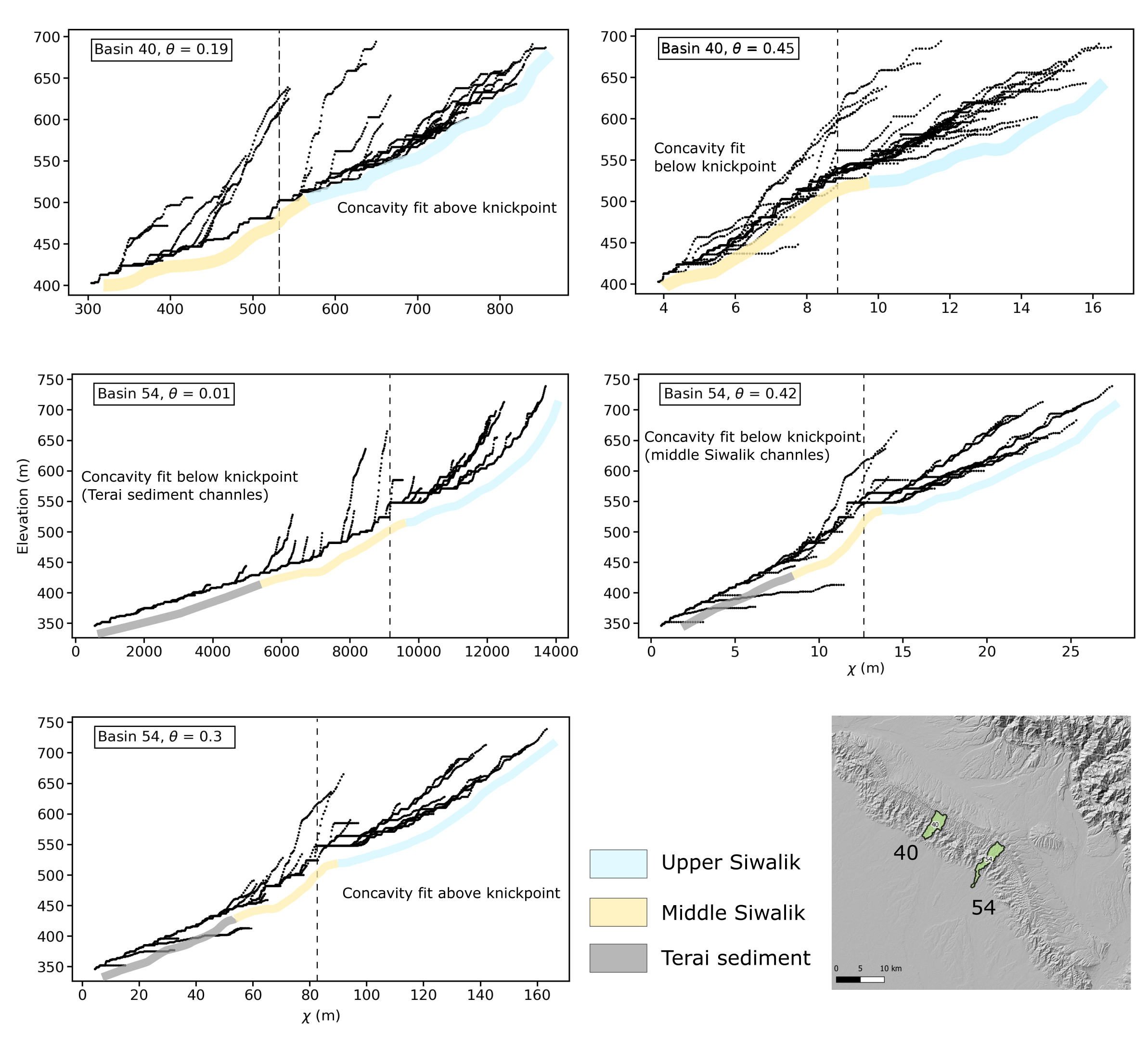 Fig 3. Chi profiles showing the partition of channel concavity above, and below the knickpoint with their underlying lithology.
Fig 3. Chi profiles showing the partition of channel concavity above, and below the knickpoint with their underlying lithology.
I also performed a radar backscatter analysis using a web based GIS, Google Earth Engine, in determining channel roughness to observe the role of sediment grain size in dictating channel concavity partition as it is hypothesized to influence fluvial network concavity (Gasparini et al., 2004; Wickert and Schildgen, 2019). However, the result suggested that there is no relation between sediment grain size and channel concavity in this regard.
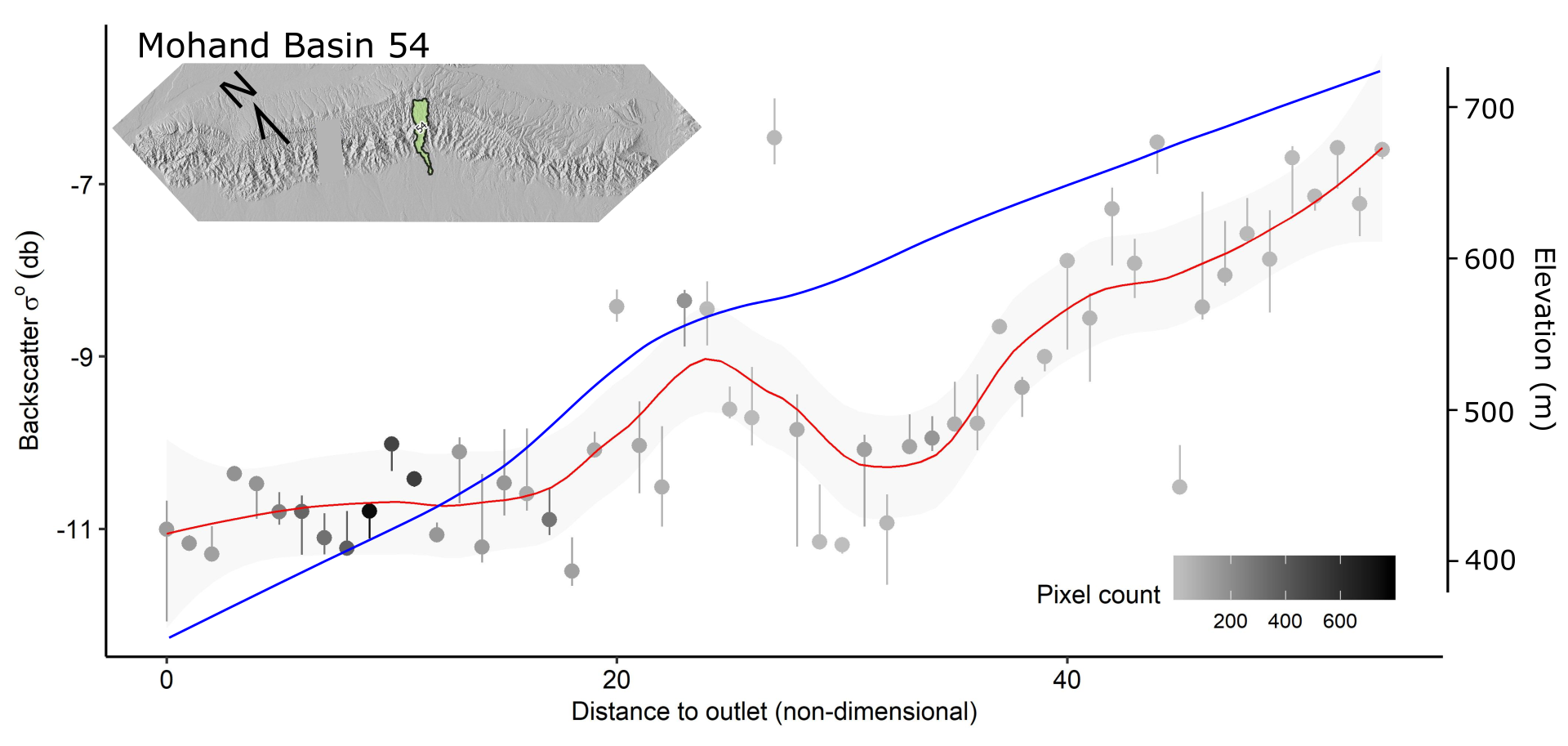 Fig 4. Backscattering profile along channel of Basin 54 in Mohand ridge.
Fig 4. Backscattering profile along channel of Basin 54 in Mohand ridge.
Here is a talk from me about my current project:
LSD Talk series normally runs every week on zoom
Update on the publication:
The published version of this researsh entitled Progressive evolution of thrust fold topography in the frontal Himalaya can be view and downloaded at: Geomorphology Journal (https://doi.org/10.1016/j.geomorph.2021.107717)
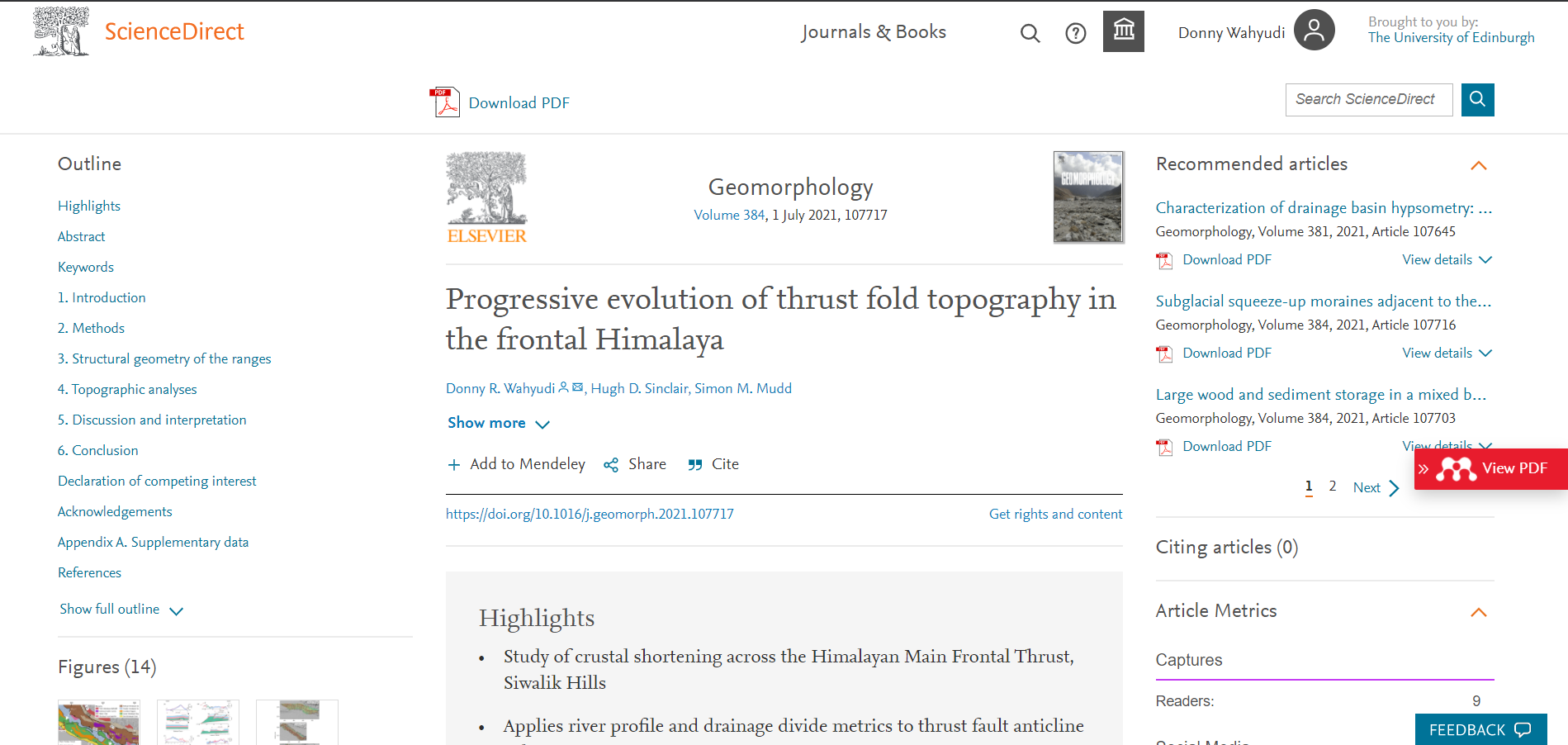
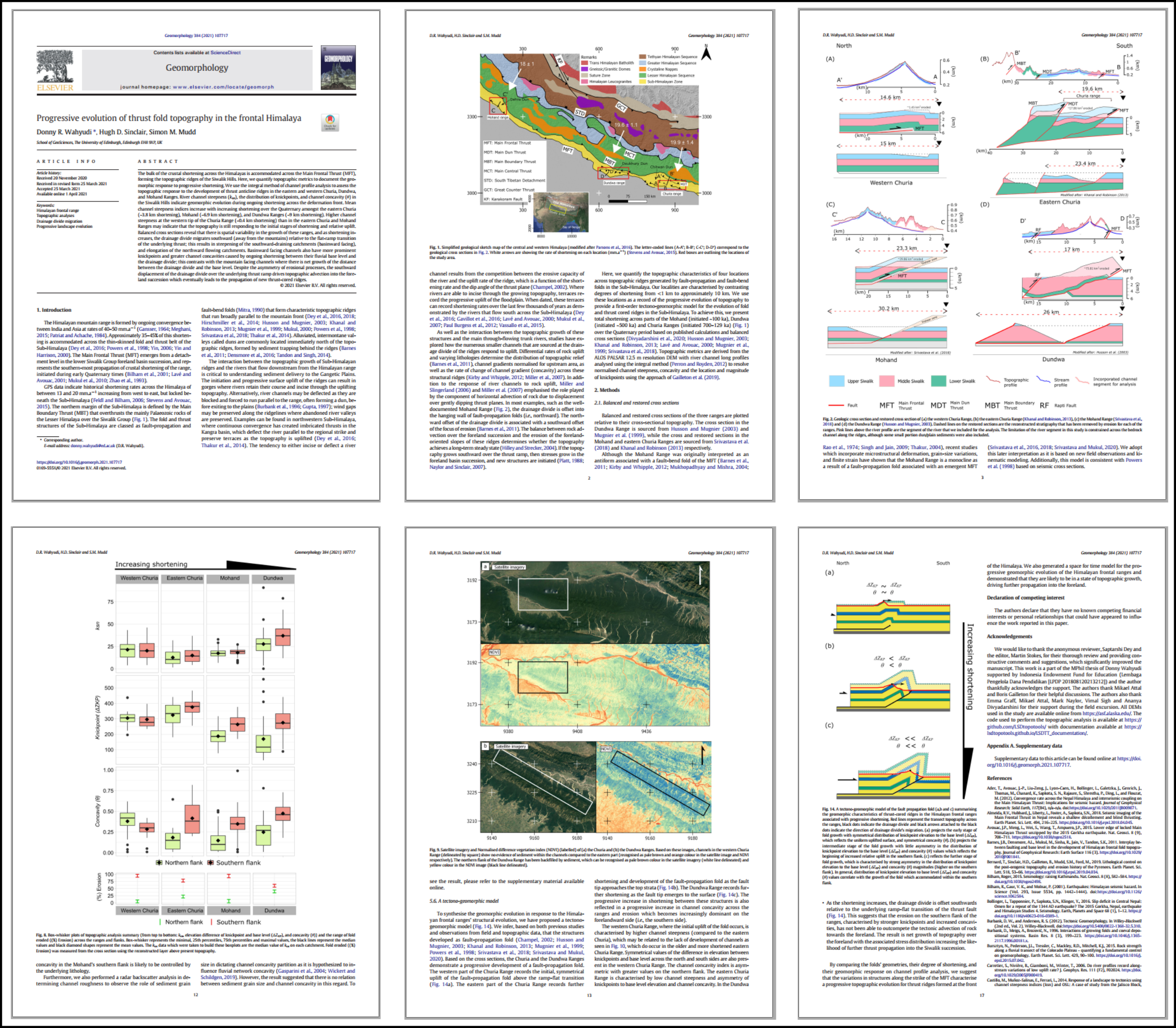 Fig 6. Proof view of the article.
Fig 6. Proof view of the article.

